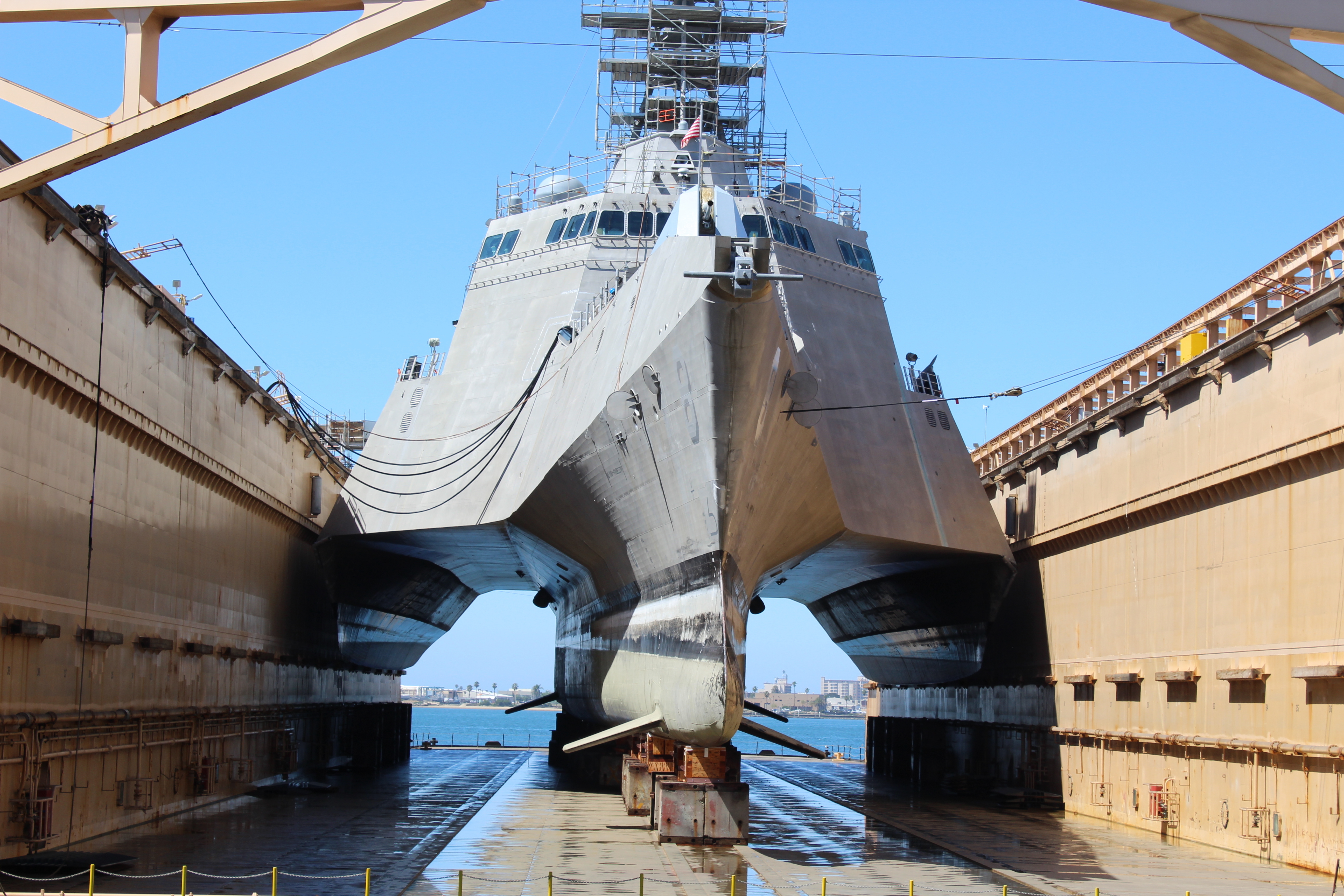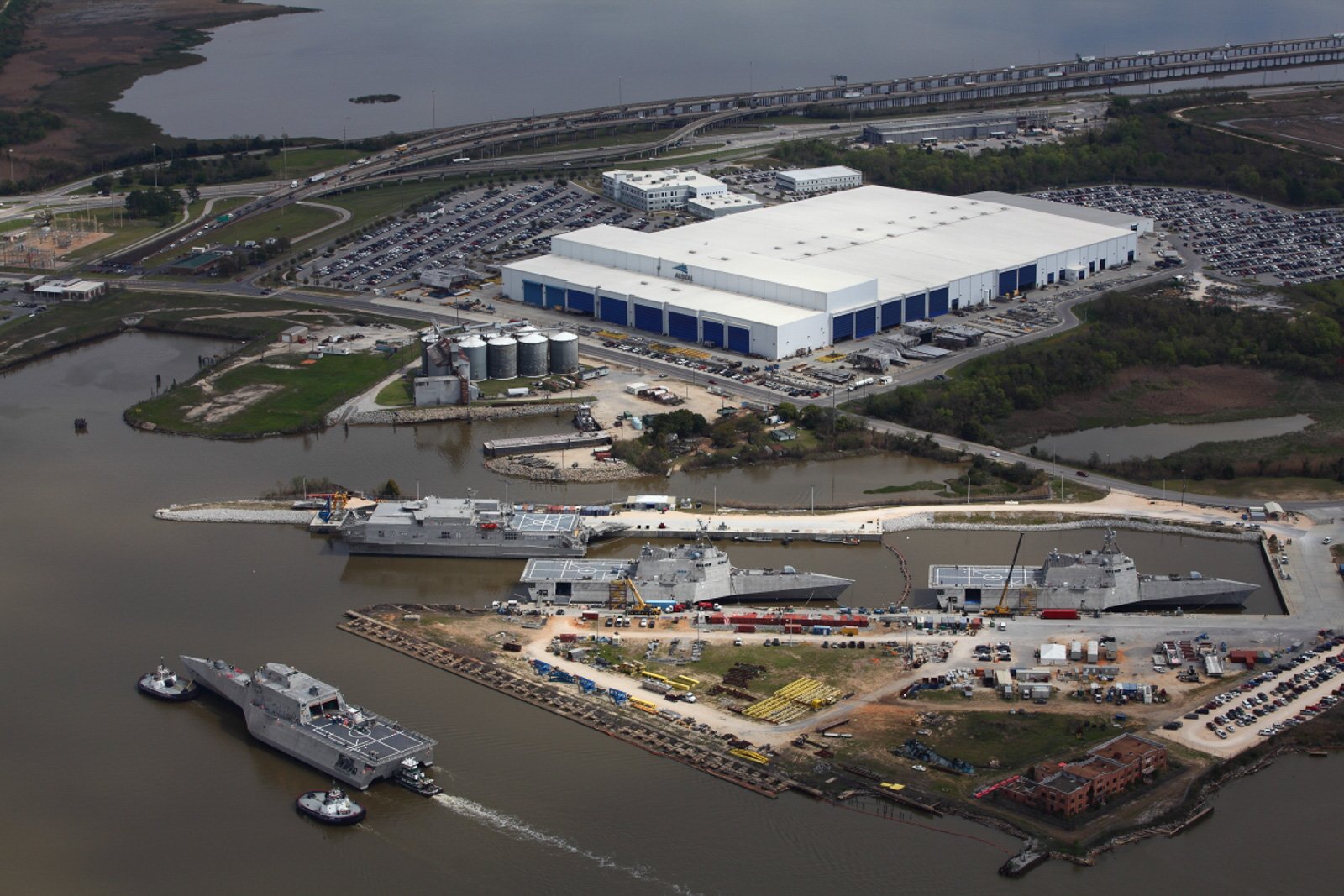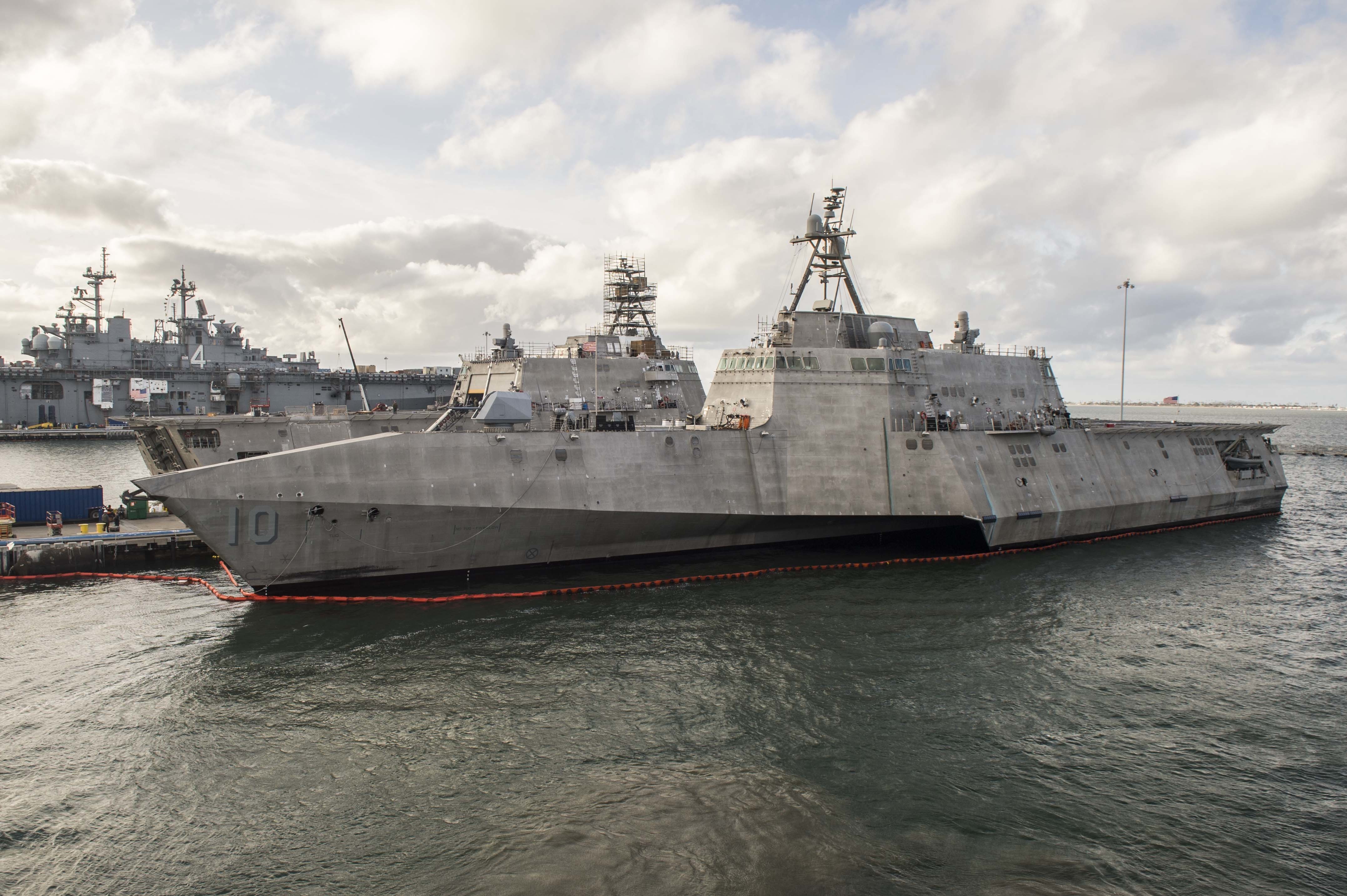
Austal USA is looking to deepen its ties with the Littoral Combat Ship program, pursuing multiple efforts to remain involved in maintenance and life cycle management for the ship program still about halfway through construction.
The Alabama shipyard is in talks with the Navy regarding opportunities to do post-delivery maintenance at its Mobile shipyard; conduct planning yard services and maintenance in San Diego and at other West Coast shipyards; and support LCSs operating forward in Singapore.
Terry O’Brien, vice president of business development for Austal USA, told USNI News that the company wanted to be involved in the LCS program from “cradle to grave.”
“If you start looking at the models for Bath, Ingalls and other shipbuilders, it is not uncommon for the shipbuilder to be involved at the planning yard stage and also during the actual conduct of maintenance,” he said.
The first of these opportunities to come to fruition is conducting post-delivery work at the Austal yard in Mobile. The Navy awarded the yard a $16.3-million contract on Jan. 24 to conduct “extended industrial post-delivery availability work” in a new arrangement that is “a first for Austal USA and the Navy,” according to a company press release.
O’Brien said the original model has LCS ships sail around from the Gulf of Mexico, through the Panama Canal and up to San Diego before conducting shakedown work and then the post-shakedown availability (PSA) at a San Diego dry dock. However, there is already a shortage of dry docks in San Diego, and the growing presence of Austal’s Independence-variant LCS – with a trimaran hull that requires dry docks for work that other kinds of ships could do pierside – will only put further pressure on the situation.
Under this new model being tested out on the future Cincinnati (LCS-20), two kinds of work would get done in Mobile: first, any work that was not completed during the construction period that the Navy chose to postpone until after delivery and commissioning, to be done at PSA. And second, any guarantee work to correct deficiencies found during sea trials in the Gulf.
“It’s a little bit on the innovative side – more than a little bit, it’s innovative,” O’Brien said.
“It helps the Navy. One, gets it done quicker, gets it done cheaper. And when they show up in San Diego it makes the ship more available for training. So they show up, they don’t have to immediately go in a maintenance availability, a lot of that’s done – any of the [remaining] maintenance that needs to be done initially when it gets to San Diego, that timeline is shortened. So obviously that helps the Navy get their asset out there, get it done and lets the people who know the ship best do the best maintenance – that’s us.”
One issue that still has to be worked out is whether the ship would conduct a full shakedown period at sea in the Gulf so that the entire PSA could take place in Mobile, or if some work would be done in Mobile, followed by more at-sea time in San Diego and then a shorter follow-on PSA there. O’Brien said the Navy awarded a contract for 12 weeks of post-delivery work for only one ship for now, but if the proof of concept goes well he hopes that the remaining nine LCSs would do similar post-delivery maintenance in Mobile.
Austal has a vessel completion yard at the shipyard where the work on Cincinnati will take place with existing personnel. If the Navy chooses to use this post-delivery model for the remaining nine hulls, some permanent fixtures would be added to the vessel completion yard to support this maintenance effort.
“The people that are doing the repairs on the ship are the people that built the ship, so they know the ship better than anybody else. So we think you’ll get a better quality and lesser time, so we think that’s a good proposition for the Navy and for us,” O’Brien said.
“When the ship arrives (in San Diego), it arrives better able to start the training process. It will be more materially ready, but also it will take less time to have to do maintenance in San Diego – so when the crew and the ship get there they’re ready to go.”

Next on Austal’s to-do list is gaining a greater foothold on maintenance planning and execution in San Diego, where every Independence-variant LCS will be homeported.
The Navy has already put out a solicitation for LCS planning yard support, and O’Brien said he expects the Navy to award a contract by this summer.
If Austal were to win that work in San Diego, “it allows us, as we plan these and the changes come to the ship, we can take a lot of that knowledge and then bring it back into the new-construction side of it. So if we know the Navy at the five- or 10-year point on a ship’s life, they’re planning to do some upgrades to the combat system or whatever, we can then take a look at it and figure out what we can do on the new ships to either mitigate or lessen that [future change],” he said.
“Once you build a ship and send it on its way, you want to stay involved in the planning yard piece of it because it helps you as you build new ships. And also, on the planning yard help, we’re the experts on the ship, so you don’t get a third party in there every time you have to relearn the ship or re-understand what’s going on. We have the ability to understand what’s been done, what can be done, what will work and what’s currently some of the successes we’ve had. So we think that’s a good area for us to expand. It’s a logical place for the builder to go.”
When it comes to actually performing the maintenance, though, Austal doesn’t have a yard on the West Coast and is looking at several options so they can stay involved in the performance of maintenance in some capacity.
“In San Diego, we’re looking at the availability of dry docks and do we want to get into that business. We’re heavily looking at the ability to either acquire or partner with somebody with a dry dock in the future. We think we’d provide the Navy with some solutions and help ease some of the dry dock burden for the Navy in the Pacific,” O’Brien said.
The Navy is also considering easing the dry dock burden in San Diego by moving some dry dock work farther up the coast – such as to Vigor’s yard in Portland, Ore., where USS Coronado (LCS-4) will complete a drydocking selected restricted availability (DSRA) – so Austal is in talks with these yards as well to see about partnering and providing Austal’s expertise on the ships.
“We are aggressively pursuing folks that have maintenance on our ships to partner with them,” O’Brien said.
With not just routine maintenance coming up ahead of the LCSs beginning a steady stream of rotational deployments, but also technology insertions such as the over-the-horizon missile system – O’Brien said he felt it was all the more important for Austal to remain involved in planning and execution of work.

The LCSs’ first stop overseas will be Singapore, where Austal has had a small office for about three years now and is ready to expand once the LCSs are operating there.
“We want to be staged out there, particularly in Singapore – it’s critical for the ships to be ready at all times, and if there’s issues we can respond quickly. So we’re starting to ramp that up to be able to provide that support out there,” he said.
Austal’s Singapore office is already supporting Austal’s other ship program, the Spearhead-class Expeditionary Fast Transport (EPF), and has a good relationship with the Commander of Logistics Group Western Pacific and Commander of Task Force 73 that will also oversee the LCSs in the region.
O’Brien said the company is looking at other maintenance facilities in the Philippines, Vietnam and other locations where Austal could help support “expeditionary maintenance” outside of the main hub in Singapore. This ability to mature LCS maintenance options as more LCSs show up in the region is “actively in our thoughts.”





